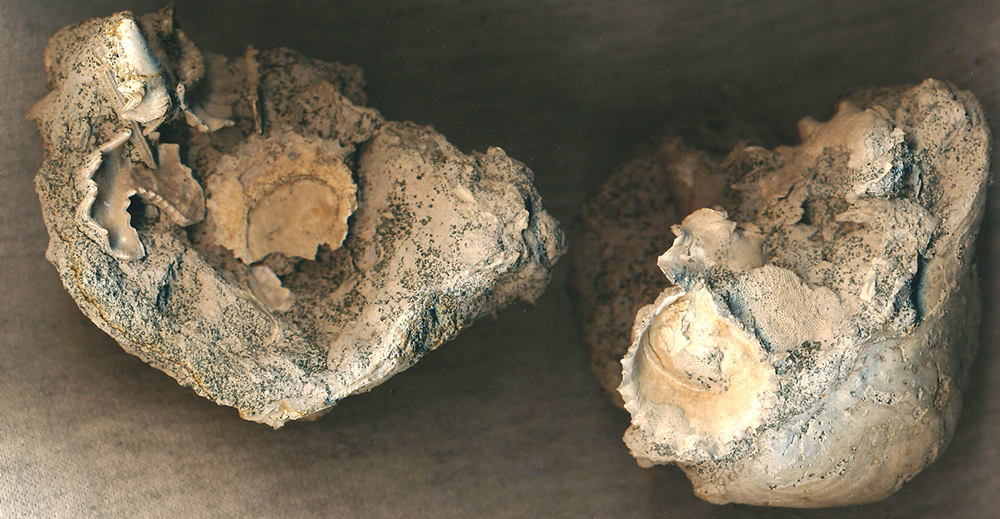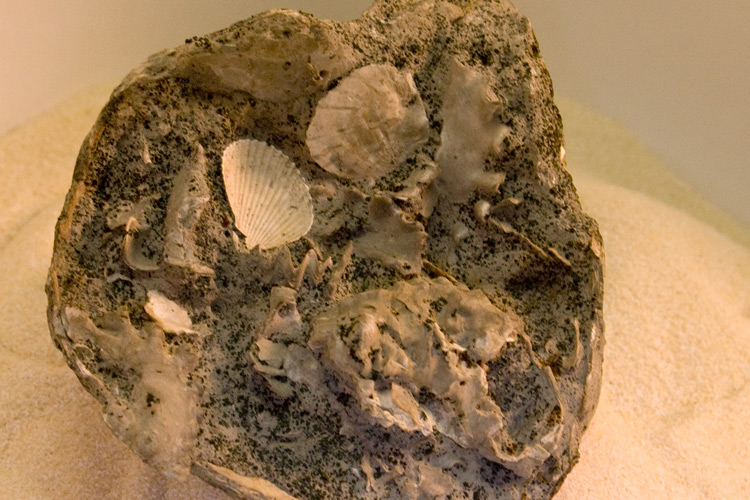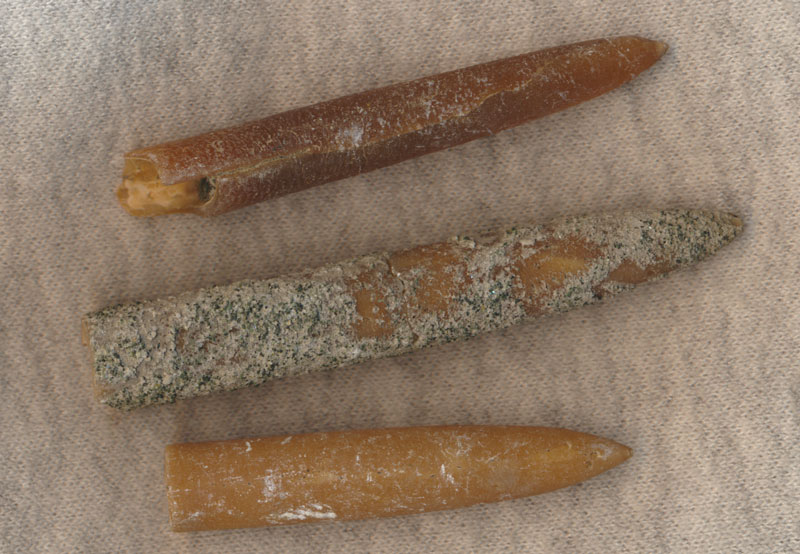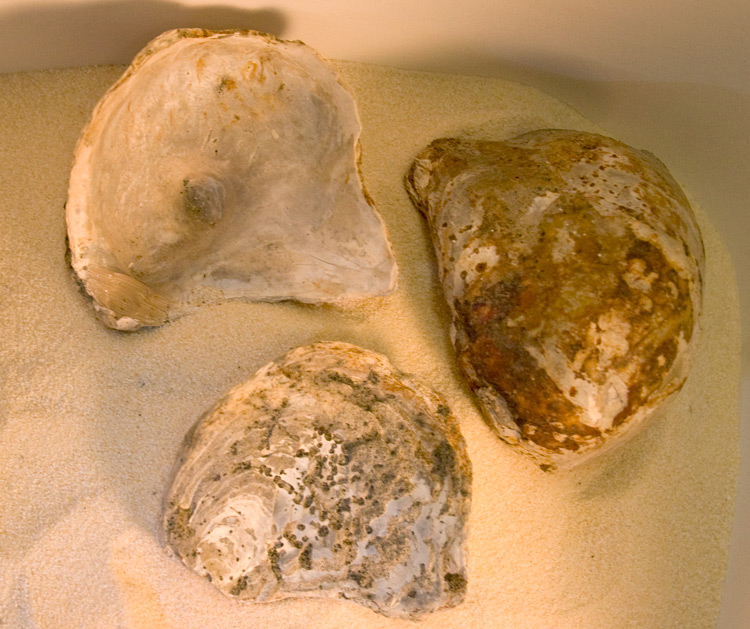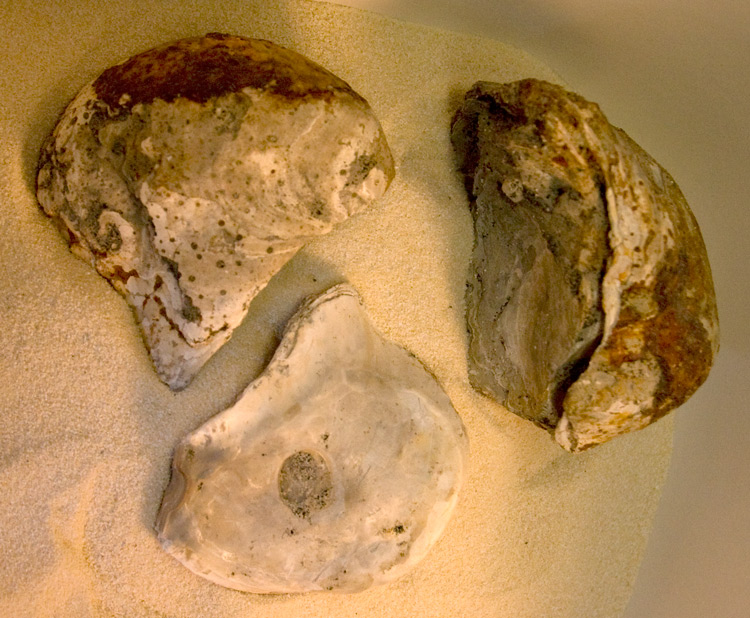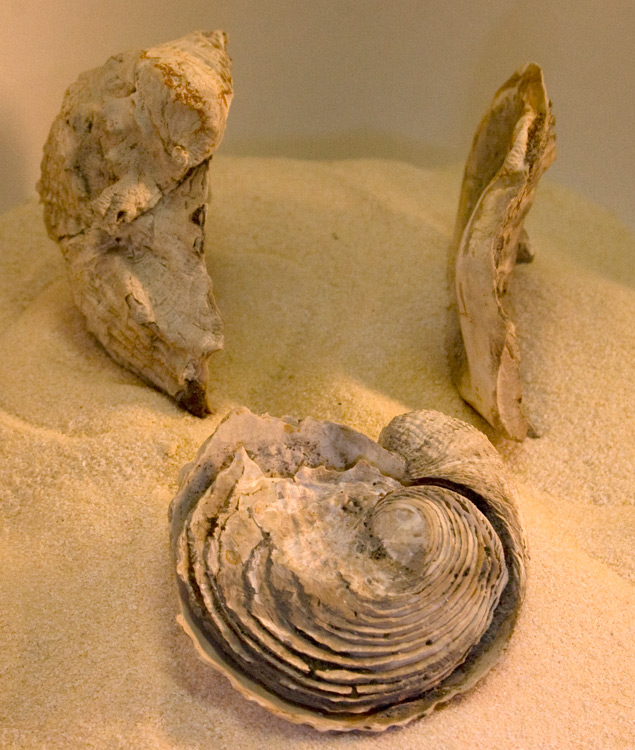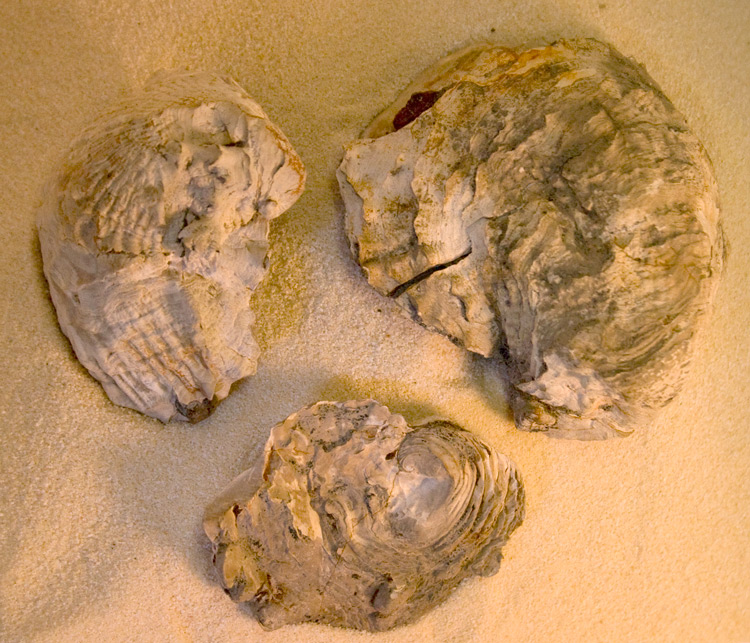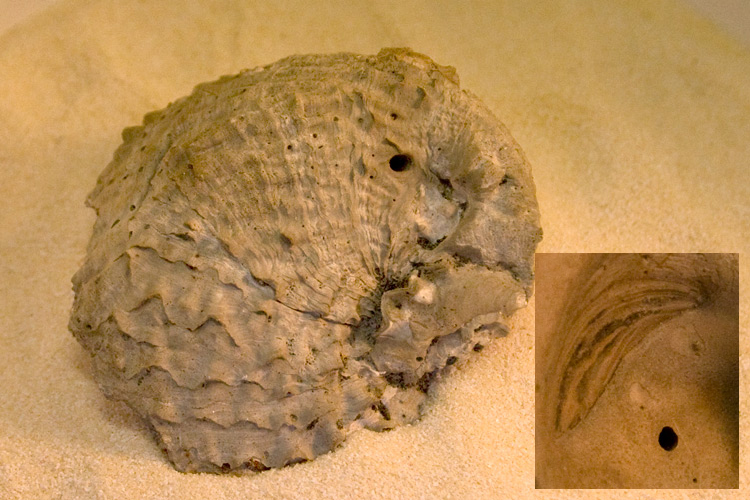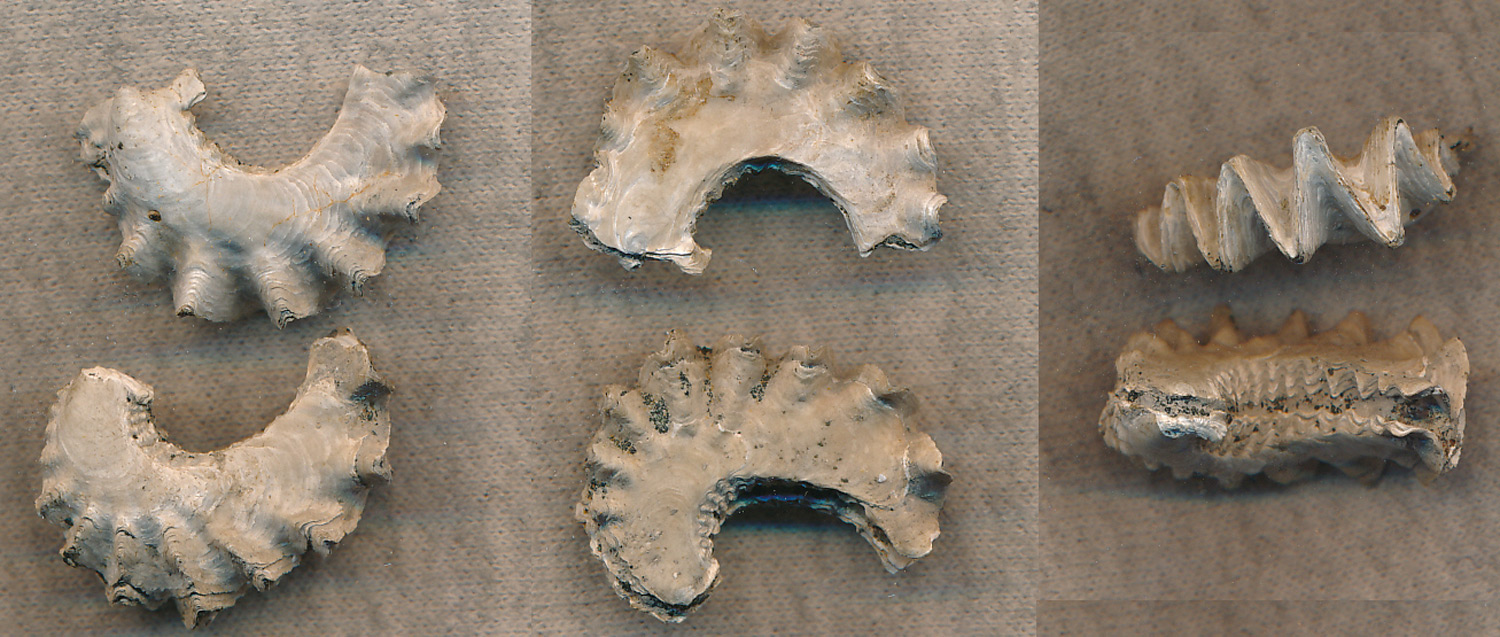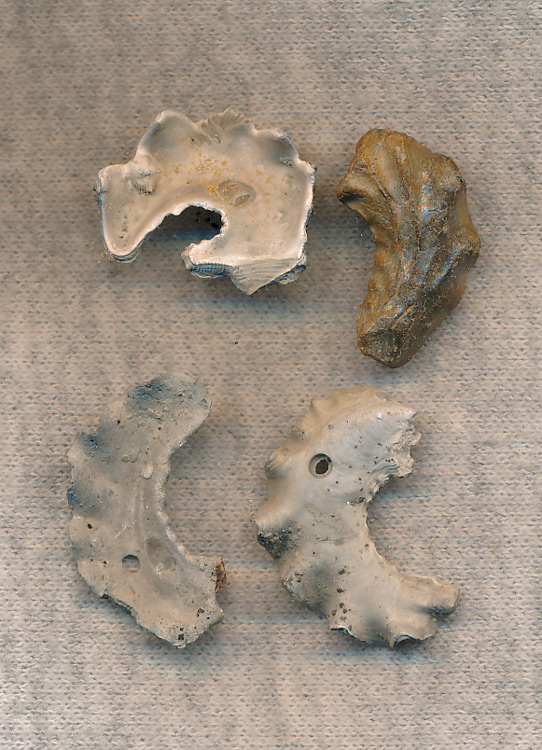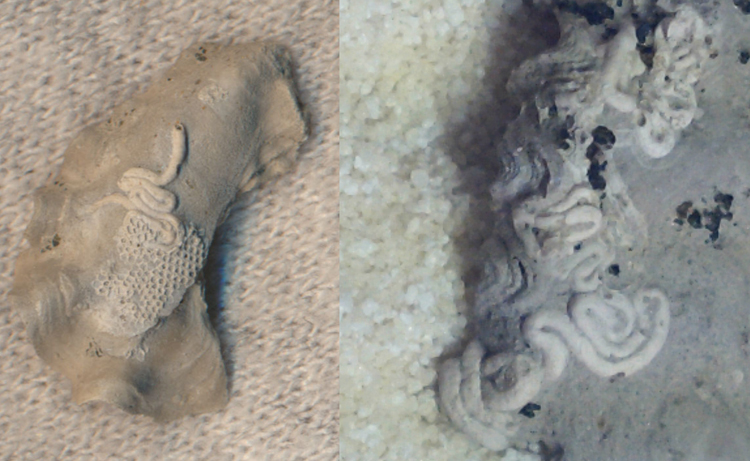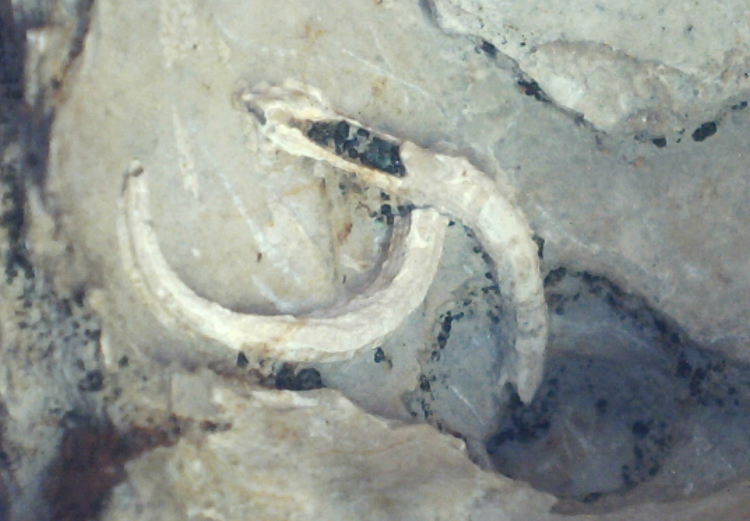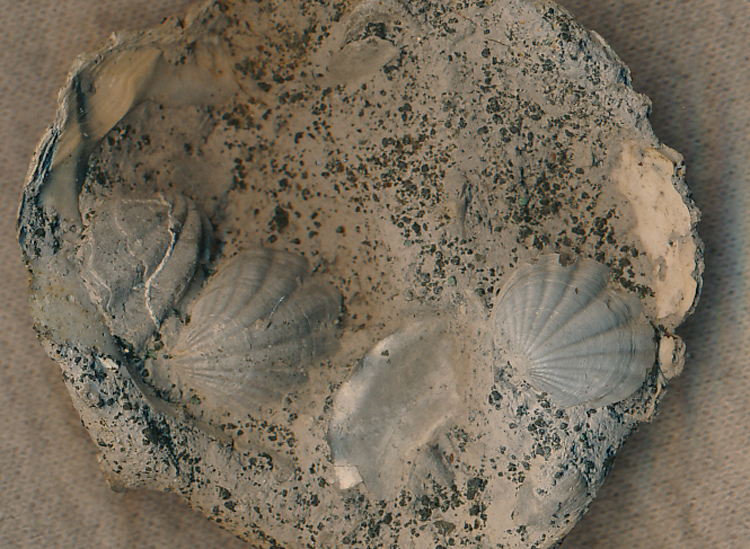Big Brook Fossils



Big Brook is a small stream that cuts into the Navesink Formation in northern New Jersey. It is late in the Cretaceous, just a little later that the fossils from the Pierre Formation at Rocky Ridge but the fossil represent an very different group of marine animals. There was a continent between the bodies of water.
Assemblages
In the Big Brook stream bed, resistant fossils like shark's teeth can be sifted but the banks contain many delicate specimens that are destroyed by stream action. Since I collected there, digging in the banks has been prohibited. Here are a couple of specimens that demonstrate the abundance.
